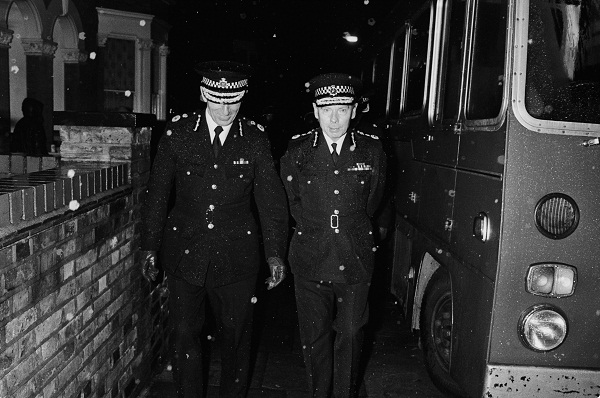‘The body is a multitude of ways of coming apart’ writes Keith Ridgeway in his most recent novel Hawthorn & Child. He describes these ways. It can be beaten, broken or burnt. It can fall down stairs or in to deep water. The excoriation of adult skin differs to that of a child’s. Ridgeway begins with not a character but a body, and as the bodies amass – sometimes sexualised as well as pulverised – the novel itself begins to come apart, and everything in it.
Hawthorn and Child are detectives in North London, tasked with finding a crime boss named Mishazzo and solving the shooting with which the novel opens. We view these supposed protagonists through a kind of parallax: they are displaced throughout the novels eight chapters and are themselves broken in to bits across its pages – readers come to recognise them only by their suits, Child’s glasses, Hawthorn’s ‘sleep scars’. The novel becomes increasingly uncanny as we encounter characters that we may or may not have already met in passages that may or may not connect. Such characters include a pickpocket, a book editor (who is also possibly a murderer), a young girl failing to understand Rothko and a pack of wolves.
But this is only the appearance of plot, in what only appears to be a novel. Ridgeway gives his readers the shards of stories in a series of disturbed episodes that come together and come apart, not unlike the ‘empty intersections’ through which Child drives. Perhaps the most striking of these is the episode named ‘How to Have Fun With a Fat Man’, in which the charging of riot police is juxtaposed with a scene of group sex. The passages coalesce to reveal ideas central to the novel – unknowable wrongs, unfathomable objects, uncontrolled and inarticulate emotion.
Ridgeway draws from an arsenal of imagery to create a work that is as wonderful as it is raw. A canal becomes ‘A ribbon of sick-looking tissue. Such as you get when you peel skin in strips from a bruised bit of back’. His writing is so unpredictable as to be vertiginous. At times, he writes like he has you by the throat – ‘But listen. Listen to me.’ – in a language that threatens to negate itself – ‘He is choosing. Choice is an illusion.’ There is a perversity that creeps through the text, and a continual compulsion toward masochism that arises in strange and vivid paroxysms of violence. Pain is described as ‘tuning up’ and it remains flinchingly close, or it spasms forth in words. Almost every character is seen in a state of extremity, whether they are having sex, fighting, fleeing, dying.
Hawthorn, who is lachrymose and suffering from troubled sleep, takes many notes and asks many questions. Readers of Hawthorn & Child must perform a similar struggle for meaning in this novel that also seems heavy with sleep, full of the disconnections of dreams. In doing so, we dramatise the attempt to make pattern from what is without pattern in an ultimately indecipherable world. One character asks of other people: ‘Where did they get their lives? Who told them that this was the way to be? How did they learn?’ In this work of fragment and fallout, the confusion is that of being.
Hawthorn & Child by Keith Ridgeway, is published by GRANTA






Comments